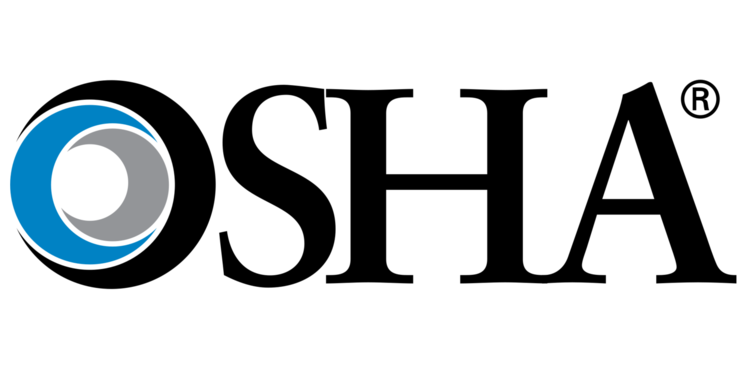In a time where many industry groups are strongly fighting against new regulations of any kind, more than 130 organizations have co-signed a petition for OSHA to establish a national standard for heat protection across many industries.
Read moreOSHA Fines 5 Contractors Involved with Florida Pedestrian Bridge Collapse
As other organizations, like the NTSB, are busy analyzing the root cause of the pedestrian bridge collapse that killed 6 people and injured 8 others in Florida in March, OSHA has finished their investigation and issued safety violations to 5 different contractors.
Read moreVirginia OSHA Cites Contractor for $304K for Silica Dust Violations, Possibly Largest in Rule History
OSHA had to fight hard to finally get its relatively new crystalline silica dust exposure regulations passed, and, once it did, the agency wasted no time enforcing the law. In the regulations first 6 months, OSHA issued 116 violations, but the highest penalty at that point was $9,239. More recently, the Virginia Occupational Safety and Health Compliance Division (VOSH) has possibly issued a record citation to a highway contractor, a whopping $304,130 penalty.
Read more7 Short Videos To Help Train Your Construction Crews on Silica Dust Hazards
It’s been almost a full year since OSHA’s more stringent regulations regarded respirable crystalline silica dust officially became enforceable. Even though the topic has been a staple in news outlets since before and after September 23, 2017 (the official enforcement date), there is still plenty of confusion across the industry.
To help contractors comply with the new regulations, OSHA has recently announced a few new resources to be used for training. Among them are a customizable PowerPoint Presentation (pdf download link), an FAQ page, and several short videos. Associated Builders and Contractors (ABC) reported that the FAQ page, which contains 53 frequently asked questions and their answers, was directly linked to a lawsuit filed by several construction industry groups, including ABC.
The videos are a combination of one OSHA produced overview video and several others that were produced by ERG and are specific to a task or piece of equipment. You will find each of those videos embedded below. More information can be found on OSHA’s Silica for Construction home page.
Protecting Workers from Silica Hazards in the Workplace Video
Handheld Power Saws (any blade diameter)
Masonry Table Saw
Handheld and Stand-Mounted Drills
Jackhammers
Handheld Grinders for Mortar Removal (e.g., tuckpointing)
Handheld grinders for uses other than mortar removal
OSHA Proposes Rule Rolling Back Injury and Illness Requirements for Large Companies
OSHA
When the Trump Administration released their Spring 2018 Unified Agenda of Regulatory and Deregulatory Actions earlier this year, they promised a few regulation rollbacks that would affect the construction industry throughout the year.
Among those rollbacks was a plan to “reconsider, revise or remove provisions of Improve Tracking of Workplace Injuries and Illnesses, also known as the Electronic Injury Reporting and Anti-Retaliation final rule in July 2018.” Just under the wire, on July 27, OSHA has issued a Notice of Proposed Rulemaking that would remove the requirement for companies that have 250 or more employees to submit information from OSHA Form 300 (Log of Work-Related Injuries and Illnesses) and OSHA Form 301 (Injury and Illness Incident Report).
Just like smaller companies, these larger companies will now only be required to electronically submit OSHA Form 300A, which is merely a high level summary of work-related injuries and illnesses. The Department of Labor stated that the proposed change was issued in order to protect privacy and reduce burdens on employers. OSHA Forms 300 and 301 contain sensitive information about individual workers who are injured or made ill.
July 1, 2018 was supposed to be the deadline for large companies to submit the OSHA Forms 300 and 301 with 2017 data through the online system, but OSHA is not currently accepting them, pending the rule change. OSHA is, however, currently accepting OSHA Form 300A with 2017 data, though any forms submitted past July 1 will be counted as late.
Full story: The Department of Labor Proposes Rule to Better Protect Personally Identifiable Information | OSHA
New App Uses Virtual Reality to Teach Construction Workers About Fall Protection
Falls from height are the leading cause of fatalities on construction sites by a long shot, as the account for around 40% of deaths. Fall protection training in the classroom can often fall short, because hearing words and learning definitions about fall prevention may not have the same effect as seeing and interacting with fall prevention techniques.
Read more[VIDEO] Hi Rise Building Collapse During Demolition Critically Injures 1 in Miami
On Monday morning, a 13 story building in Miami Beach that was being prepped for demolition suddenly collapsed, injuring one Project Manager that was struck by debris.
Read moreCarbon Monoxide Poisoning Hospitalizes 12 Construction Workers in Maryland
A dozen construction workers in Odenton, Maryland were transported to local hospitals on Tuesday, July 17 after apparent carbon monoxide (CO) poisoning, according to local fire officials.
Crews began working on a federal credit union building around 5am Tuesday morning and between 8am and 9am, several workers began feeling sick, prompting a call to 911. According to CBS Baltimore, propane powered saws were being used indoors that morning and is the likely cause of the incident.
When firefighters arrived, they measured carbon monoxide levels of up to 850 parts per million (ppm) inside the credit union. According to the CSPC, ppm amounts as low as 70 can cause symptoms like headaches, fatigue, and nausea. At sustained levels of 150 to 200 ppm, more severe symptoms like disorientation, unconsciousness, and death are possible.
3 of the victims were treated for serious symptoms and the other 9 were treated for possibly serious symptoms. Fire officials stayed on the site after the workers were transported to ventilate the building and bring the inside air down to safe levels.
As a reminder, CO is a colorless and odorless gas that is otherwise undetectable until symptoms appear. Even small propane powered tools have the ability to quickly fill an indoor space with CO. The CDC has a few recommendations to reduce the hazards of carbon monoxide on the jobsite, including not allowing gas powered equipment to be used indoors unless the engines can be located outside and away from air intakes and educating employees to recognize the common signs of CO overexposure. Electric powered or compressed air equipment should be used indoors, when possible. If it is impossible to avoid using gas powered equipment, employees can be outfitted with personal CO monitors to alert them if unsafe levels have been reached.
Full story: 12 Hospitalized After Carbon Monoxide Poisoning At Credit Union | CBS Baltimore
How Construction Workers Can Better Protect Themselves from Skin Cancer
A large portion of construction work is completed outside, leaving hundreds of thousands of workers exposed to the sun for long periods of time. Along with that sun exposure comes an increased risk of skin cancer, which is the most common type of cancer.
The deadliest form of skin cancer is melanoma and it is expected that 90,000 people will be diagnosed with the disease and 9,000 of those will be killed by the disease in 2018. Not all of those cases will be from the construction industry, but it speaks to the real threat that skin cancer provides.
To help the construction industry reduce their risk of developing skin cancer, the Center for Construction Research and Training (CPWR) has developed a document called Hazard Alert: Skin Cancer, which outlines how to protect your skin and how to detect early signs of the disease. You can find that document by clicking here, it’s a good hand out for your crew and a good topic for an upcoming toolbox talk.
Skin Cancer Detection
Like most cancers, early detection is the biggest key to recovery. With skin cancers, the development of new moles is the most common warning sign that skin cancer is developing on your body. CPWR states that you should look out for new or existing moles that:
Have an irregular border
Are not symmetrical or have color variation
Are bigger than a pencil eraser
Are itchy or painful
Another sign to look out for is if you have a bump, patch, or sore that bleeds, oozes, crusts, or doesn’t heal
How to Protect Your Skin
The first tip that the CPWR document is to wear sunscreen. The avoidance of getting sunburned is a huge part of reducing skin cancer risk and an SPF of 30 or more can reduce your sunburn risk.
Protective clothing is another great way to avoid sunburns. It may be counterintuitive for you to wear long sleeve shirts and pants in the summer, but they’re a very effective means of protecting the skin, because it doesn’t require you to re-apply sunscreen multiple times throughout the day. There are some good options for long sleeve shirts that wick away moisture, like Milwaukee’s Workskin shirts ($39.99 on Tool Barn). Be sure to cover your neck with a cloth flap attached to your hard hat, as well.
Staying in the shade is the 3rd effective means of avoiding sun exposure that CPWR notes. Adjusting schedules to earlier in the day or overnight can keep workers cooler and out of the sun for longer. When breaks are taken, find a shady spot or build a temporary shade structure.
In addition to skin cancer risks, there are plenty of other summer dangers on construction sites to be aware of, so make sure you and your crew is prepared to take on the heat.
Full story: Hazard Alert – Skin Cancer | CPWR
Frequently Asked Questions About Silica Dust Exposure, Answered
OSHA's new crystalline silica dust exposure regulations officially went into effect on September 23, 2017. Over the past 10 months, there has been plenty of confusion about the lung disease causing material. In the first 6 months after the effective date, OSHA's inspectors yielded 116 violations across the country.
Read more















Last summer, Hilti announced that they had developed their first exoskeleton designed for construction tradespeople in a partnership with Ottobuck, a prosthetics, orthotics, and exoskeleton provider. Earlier this month, Hilti officially released the exoskeleton, announced more details, and published its retail price on their website.